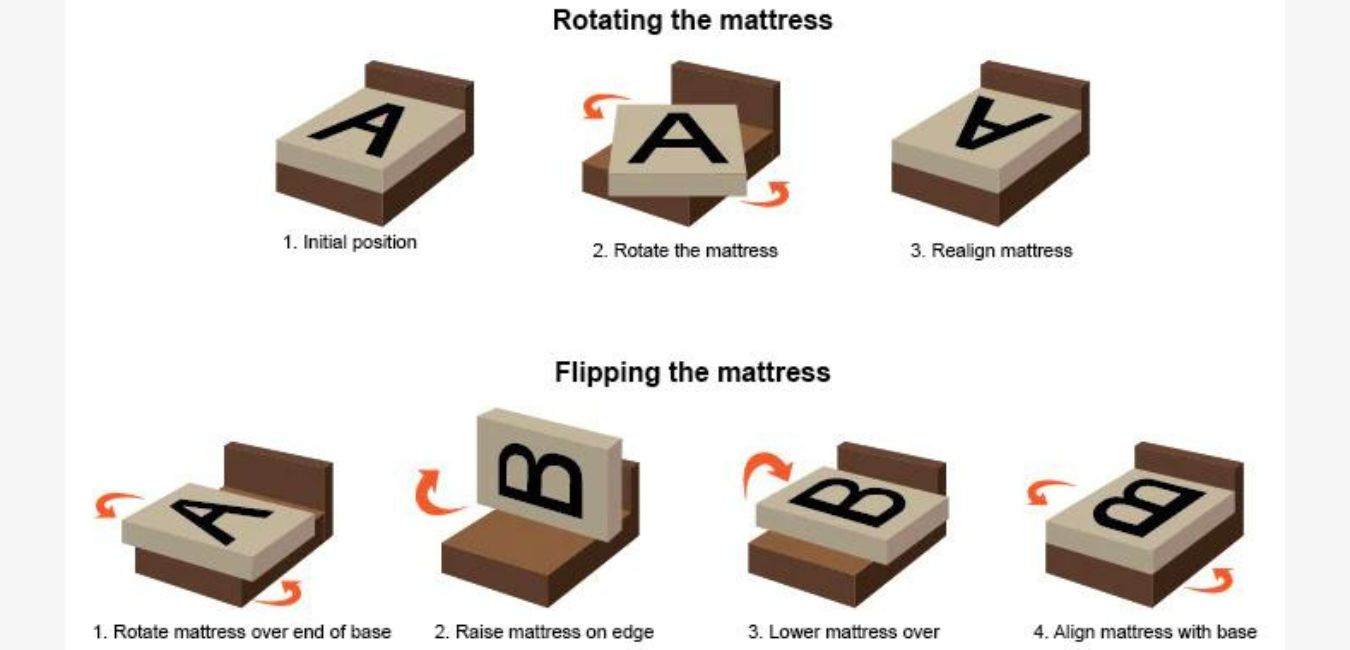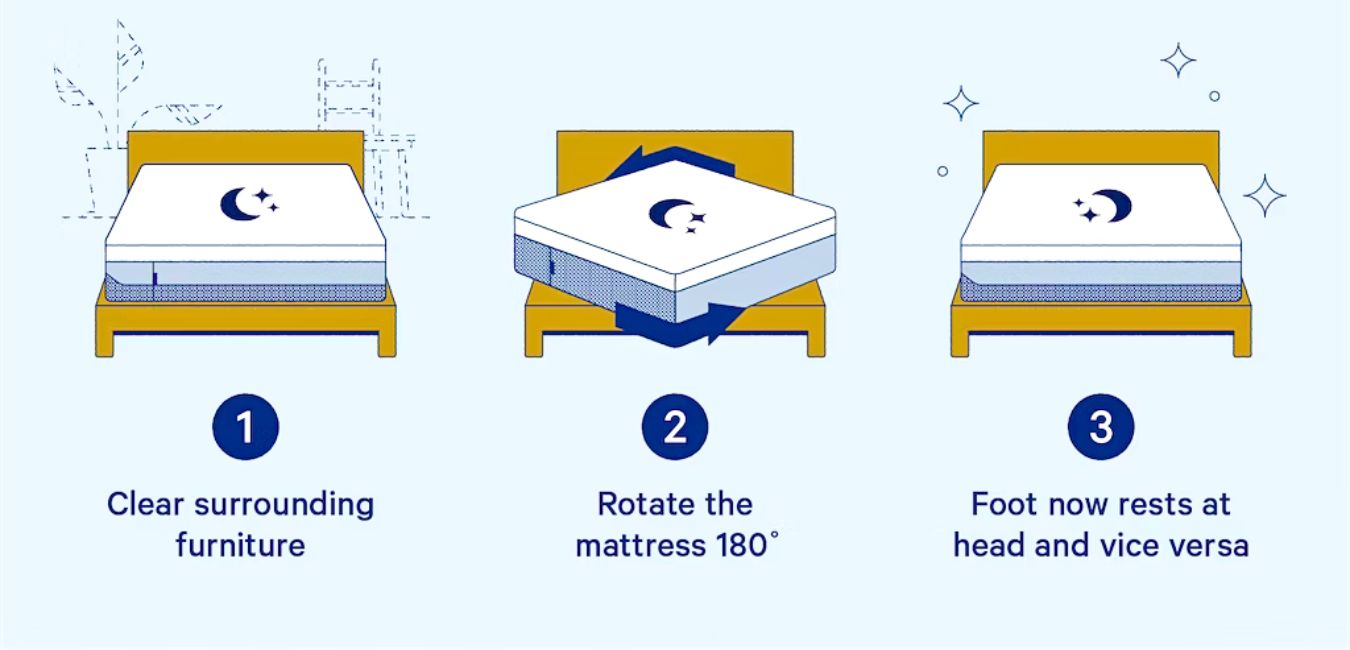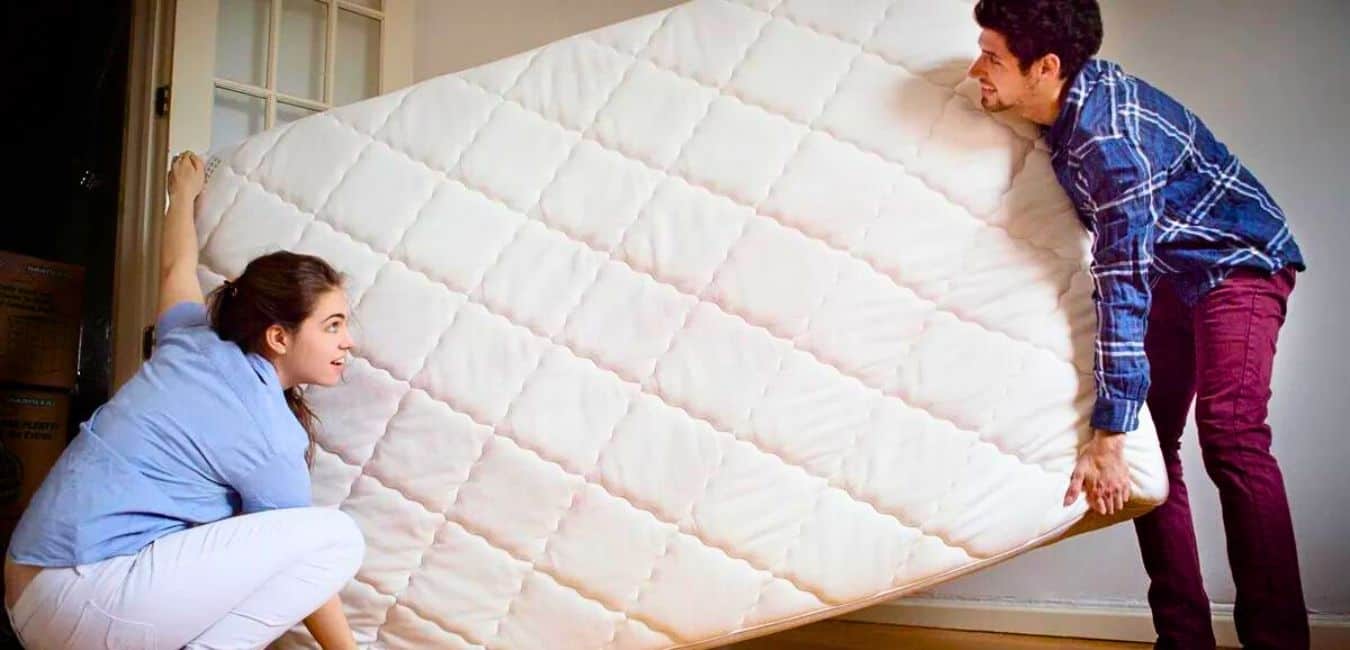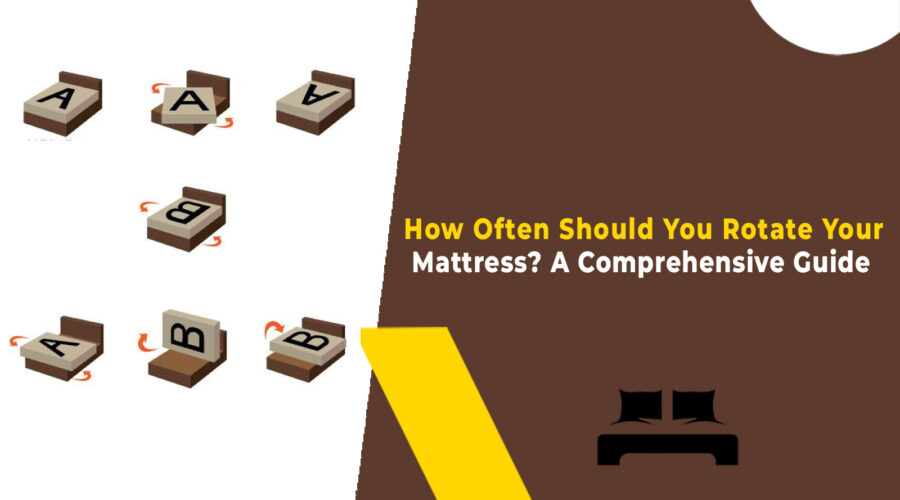If you’ve ever wondered about the right time to give your mattress a spin, you’re in the right place.
People also get confused about whether you can wash a mattress topper. In this guide, we’ll uncover the secret to extending the comfort and longevity of your mattress through mattress maintenance timing for your help.
Imagine your mattress as your trusty sleep companion, supporting you night after night. Just like flipping a pancake for even cooking, rotating your mattress ensures even wear and tear. But how often should you do it?
Don’t worry, we’ve got you covered with easy-to-follow advice that won’t make your head spin.
Observe the factors that influence rotation frequency, like types of memory foam, usage patterns, mattress care, and rotation. Keep reading!
Why should we rotate the Mattress?
Rotating a mattress is a simple yet effective way to ensure its longevity and maintain your sleeping comfort. Over time, the repetitive pressure from our bodies can lead to uneven wear and tear on a mattress. Regular rotation helps distribute this pressure more evenly, extending the life of the mattress and enhancing its support. Here’s why mattress rotation matters:

Even Wear
Rotating the mattress prevents the same areas from bearing the brunt of your body weight every night. This minimizes the development of sagging spots, ensuring that you enjoy a consistently comfortable sleep surface.
Extended Lifespan
A well-rotated mattress is less likely to develop permanent indentations or lumps. By preserving the mattress’s structural integrity, you can use the bed frame weight limit for a longer period before needing to replace it.
Improved Comfort
Uneven surfaces can lead to discomfort and disrupt your level of sleep quality. Regular rotation maintains a uniform feel across the mattress, ensuring a more restful and supportive sleep experience.
Optimal Support
Mattress materials, such as coils and foam, can settle over time. Rotation prevents excessive compression in one area, allowing the mattress to provide the proper support your body needs.
Manufacturer Recommendations
Many mattress manufacturers advise regular rotation to uphold their warranties. Following their guidelines can help you retain warranty coverage if any issues arise.
Remember that the frequency of rotation can vary based on the type of mattress you have and your sleep habits. By incorporating mattress rotation into your routine, you’re investing in both your comfort and the longevity of your sleep investment.
How frequently to rotate a mattress?
The proper mattress rotation interval depends on its type, materials, and how often it’s used. Here’s a general guideline according to facts about mattresses:

Innerspring Mattress
Every 3 to 6 months. Innerspring mattresses can develop sagging areas more quickly due to the coil structure. Rotating every few months helps distribute the wear evenly.
Memory Foam Mattress
Every 6 months to a year. Memory foam mattresses are more resistant to sagging, so rotating them less frequently is usually sufficient.
Hybrid Mattress
Every 4 to 6 months. Hybrids combine innerspring coils with foam layers. They benefit from rotation to prevent uneven wear on both the springs and the foam.
Latex Mattress
Every 6 months to a year. Latex is durable and retains its shape well, but occasional rotation helps maintain consistent support.
Keep in mind these general recommendations about how often should you flip your mattress. However, your mattress might have specific care instructions from the manufacturer. Always refer to the manufacturer’s guidelines for the most accurate rotation frequency. Also, consider your body weight, sleeping habits, and any changes in comfort level. If you notice sagging or unevenness, rotate the mattress more frequently.
Flipping your Mattress Golden Rules
Flipping your mattress can significantly contribute to its longevity and your sleep quality. Here are the golden rules to keep in mind when flipping your mattress:

Follow Manufacturer Guidelines
Different mattresses have different construction and materials, which affect how they should be flipped. Always refer to the manufacturer’s instructions for the specific flipping recommendations for your mattress which help to know how to dry a mattress.
Rotate and Flip
If your mattress is designed to be flipped with contouring layers, not just rotated, make sure to flip it both horizontally (head to foot) and vertically (top to bottom). This helps distribute wear and tear evenly across the entire mattress.
Use Proper Tools
Mattresses can be heavy and unwieldy. Enlist the help of a friend or family member when flipping to avoid straining your back or damaging the mattress.
Regular Schedule
Set a reminder to flip your mattress comfort layer according to the recommended schedule. This could be every few months or as often as the manufacturer suggests. Consistency is key to maintaining mattress integrity.
Protective Covers
If you use a mattress protector or cover, make sure it’s compatible with flipping. Some covers are designed to be used only on one side of the mattress.

Seasonal Routine
Some people find it helpful to tie mattress flipping to the change of seasons—spring, summer, fall, and winter—as a simple way to remember.
Inspect for Wear
Take the opportunity to inspect your mattress for any signs of sagging, lumpiness, or damage while flipping. Addressing issues early can prevent further discomfort.
Age and Type Matter
Newer mattresses and those with specialized materials (like memory foam) may not require flipping. In some cases, rotating might be sufficient. Again, check the manufacturer’s guidelines.
Patience after Flipping
Some mattresses might feel different for a few days after flipping as they settle into the new configuration. Give it a bit of time to readjust before evaluating its comfort.
How to rotate a mattress by yourself?
Rotating a mattress by yourself might require a bit of effort, but it’s manageable with the right technique. Here’s a step-by-step guide:

- Clear the Area: Remove any obstacles around the bed to create enough space for maneuvering the mattress and get an easy way to deodorize the mattress.
- Prepare Yourself: Wear comfortable clothing and closed-toe shoes for a secure grip on the floor.
- Gather Supplies: You might need a bedsheet or blanket to protect the foam mattress from friction on the floor.
- Safety First: If your mattress is too heavy or large for you to handle alone, it’s wise to ask for help from a friend or family member.
- Plan the Rotation: Determine cooling tech whether you’re going to rotate the mattress horizontally (head to foot) or vertically (top to bottom), based on your rotation schedule and mattress type.
- Remove Bedding: Strip off any sheets, blankets, and pillows from the mattress to make it easier to handle.
- Slide the Mattress: If the foam mattress is on a bed frame with wheels, you can gently slide it to the edge of the frame in the desired direction of rotation.
- Place Protective Material: If you’re rotating directly on the floor, place a bedsheet or blanket to prevent the mattress from rubbing against the floor surface.
- Lift One Side: Stand on one side of the mattress and bend your knees, keeping your back straight. Slide one hand under the mattress, near the corner, and grip it firmly.
- Lift and Rotate: Lift the corner of the mattress and start rotating it in the chosen direction. Use your other hand to guide and support the movement.
- Shift and Lower: Once you’ve rotated the mattress about a quarter turn, shift your grip to a more central position. Lower the mattress gently onto the bed sheet or blanket.
- Reposition the Mattress: Adjust the mattress’s position so that it’s aligned with the bed frame or base.
- Repeat for the Other Side: Move to the opposite side of the mattress, slide your hand under the corner, and repeat the lifting and rotating process or comfort fillings.
- Center the Mattress: After completing the rotation, make sure the mattress is centered on the bed frame or base for an even appearance.
- Replace Bedding: Put on fresh sheets, blankets, and pillows to complete the process.
Rotating mattress tips
Certainly, here are some useful tips to keep in mind when rotating your mattress:

Gather Assistance
Mattresses can be heavy. Enlist the help of a friend or family member to make the rotation process easier and safer.
Clear the Area
Before attempting to rotate the mattress, clear the surrounding area to provide ample space to maneuver.
Protective Covers
If your mattress has a removable cover or protector, check if it needs to be removed before rotating must know how to store a mattress. Some covers are designed to be on specific sides.
Mark Rotation Date
Keep track of when you last rotated the mattress. A simple calendar reminder or note can help you maintain a regular rotation schedule.
Horizontal and Vertical Rotation
If your mattress is designed to be flipped, rotate it both horizontally (head to foot) and vertically (top to bottom) to ensure even wear distribution.
Center the Mattress
After rotating, ensure the mattress is centered on the bed frame to maintain symmetry and avoid overhanging edges.

Evaluate Comfort
Give the mattress a few nights to adjust to its new position. Sometimes, a freshly flipped mattress might feel different for a short period as the materials settle.
Regular Maintenance
Use the rotation time as an opportunity to inspect the mattress for any visible signs of wear, sagging, or damage. Address any issues promptly.
Consider Mattress Type
Different mattress types have varying needs. Memory foam and latex mattresses may require less frequent rotation compared to innerspring mattresses.
Follow a Schedule
Establish a consistent rotation schedule based on memory foam mattress reviews, usage, and manufacturer recommendations. This ensures that the wear is evenly distributed over time.
Flip-Only Mattresses
If your mattress is not designed to be flipped, regular rotation is still beneficial. It’s typically recommended to rotate it 180 degrees to change the head and foot sides.
Be Patient
If you’re new to rotating your mattress, it might take a little practice to get the process right. Take your time and prioritize safety.
How Often Should You Rotate Your Mattress – FAQs
Conclusion
The insights shared in this article shed light on the significance of mattress rotation frequency, in maintaining sleep quality and extending a mattress’s lifespan, you must know how to return a mattress. Drawing from expert knowledge and personal experience, it’s evident that this practice is a simple yet impactful way to ensure even wear and prevent sagging or discomfort over time.
As an avid believer in the value of the mattress care guide booklet, I have personally witnessed the positive outcomes of this practice in terms of improved comfort and durability.
Incorporating mattress rotation into our home maintenance routine not only supports our sleep but also maximizes the value of our investment. With a small effort, we can all savor nights of rejuvenating sleep on a mattress that remains consistently supportive and inviting over the years.




